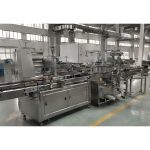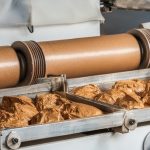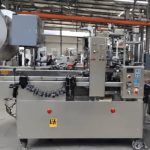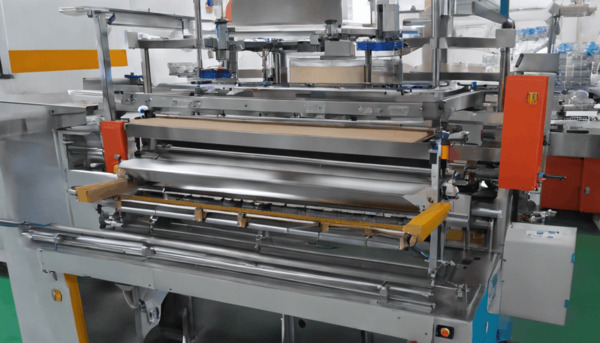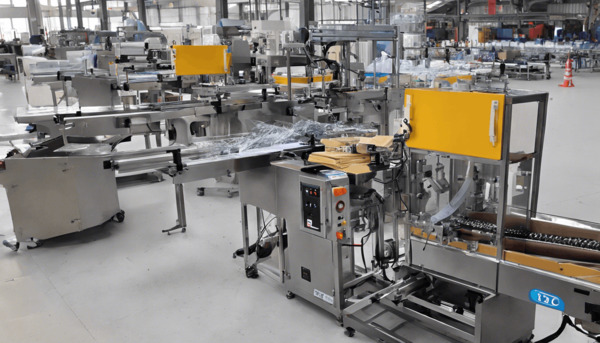
Understanding Sealing Machines
Sealing machines are an essential component in various industries, particularly in packaging. They are used to seal products, ensuring that they are protected from contamination, leakage, and spoilage. The primary function of a sealing machine is to create a secure closure on packaging materials, which can range from plastic bags to bottles and cartons. This article will delve into the different types of sealing machines, their applications, and how they are used in various industries.
Types of Sealing Machines
Sealing machines come in various types, each designed for specific applications and materials. Understanding these types is crucial for selecting the right machine for a particular job. Here are some common types of sealing machines:
Impulse Sealers
Impulse sealers are widely used for sealing thermoplastic materials such as polyethylene and polypropylene. They operate by using a heated wire to melt the plastic and create a seal. The heat is applied only when the machine is activated, making it energy-efficient. Impulse sealers are commonly used in industries that require quick and reliable sealing, such as food packaging and retail.
Continuous Band Sealers
Continuous band sealers are designed for high-volume sealing tasks. They use a conveyor belt to move the packaging material through the sealing process, allowing for continuous operation. These machines are ideal for sealing bags and pouches in industries like pharmaceuticals, food processing, and electronics. They provide consistent and strong seals, which are essential for maintaining product integrity.
Vacuum Sealers
Vacuum sealers are used to remove air from packaging before sealing it. This process extends the shelf life of products by preventing oxidation and microbial growth. Vacuum sealers are commonly used in the food industry for packaging perishable items like meat, cheese, and vegetables. They are also used in the electronics industry to protect sensitive components from moisture and dust.
Induction Sealers
Induction sealers are used to seal containers with a foil liner. The machine uses electromagnetic induction to heat the foil, which then bonds to the container’s rim, creating a hermetic seal. This type of sealing is commonly used for bottles and jars in the pharmaceutical and food industries. Induction sealing provides tamper-evident packaging, which is crucial for consumer safety.
Heat Shrink Sealers
Heat shrink sealers use heat to shrink a plastic film around a product, creating a tight seal. This method is often used for packaging multiple items together, such as in the case of bundling beverages or wrapping gift baskets. Heat shrink sealing provides a protective barrier against dust and moisture, making it suitable for various retail products.
Applications of Sealing Machines
Sealing machines are used in a wide range of industries, each with specific requirements and standards. Here are some of the key applications:
Food Industry
In the food industry, sealing machines are essential for preserving freshness and extending shelf life. They are used to package snacks, dairy products, meats, and more. Vacuum sealers, in particular, are popular for their ability to prevent spoilage by removing air from the packaging.
Pharmaceutical Industry
The pharmaceutical industry relies on sealing machines to ensure the safety and efficacy of medications. Induction sealers are commonly used to provide tamper-evident packaging for bottles and jars, while blister packaging machines are used for individual doses of pills and capsules.
Electronics Industry
In the electronics industry, sealing machines are used to protect sensitive components from environmental factors such as moisture and dust. Vacuum sealers and heat shrink sealers are often employed to package items like circuit boards and electronic devices.
Retail and Consumer Goods
Retail products often require attractive and secure packaging to appeal to consumers. Sealing machines are used to package items such as clothing, toys, and household goods. Heat shrink sealers are particularly popular for creating tamper-proof packaging that enhances product presentation.
How to Use a Sealing Machine
Using a sealing machine involves several steps, which may vary depending on the type of machine and the material being sealed. Here is a general guide on how to use a sealing machine:
Preparation
Before using a sealing machine, ensure that it is clean and in good working condition. Check the machine’s settings and adjust them according to the material and thickness of the packaging. For example, impulse sealers require setting the appropriate sealing time and temperature.
Loading the Material
Load the packaging material into the machine. For impulse sealers, place the open end of the bag or pouch between the sealing bars. For continuous band sealers, place the bag on the conveyor belt. Ensure that the material is aligned correctly to achieve a straight and even seal.
Sealing Process
Activate the machine to begin the sealing process. For impulse sealers, press down on the sealing arm to apply heat and pressure. For continuous band sealers, the machine will automatically move the material through the sealing process. Monitor the process to ensure that the seal is consistent and strong.
Quality Check
After sealing, inspect the seal for any defects such as wrinkles, gaps, or weak spots. A proper seal should be smooth and uniform. If any issues are detected, adjust the machine settings and repeat the process.
Maintenance and Safety Tips
Regular maintenance and adherence to safety guidelines are crucial for the efficient operation of sealing machines. Here are some tips:
Regular Cleaning
Keep the machine clean to prevent contamination and ensure smooth operation. Clean the sealing bars, conveyor belts, and other components regularly to remove any residue or debris.
Routine Inspections
Conduct routine inspections to check for wear and tear on parts such as sealing wires and belts. Replace any damaged components promptly to prevent breakdowns and maintain sealing quality.
Safety Precautions
Follow safety guidelines to prevent accidents and injuries. Wear appropriate protective gear, such as gloves and safety glasses, when operating the machine. Ensure that the machine is turned off and unplugged before performing any maintenance or repairs.
Conclusion
Sealing machines play a vital role in various industries by providing secure and reliable packaging solutions. Understanding the different types of sealing machines and their applications can help businesses select the right equipment for their needs. By following proper usage and maintenance guidelines, companies can ensure the efficient operation of their sealing machines, ultimately enhancing product quality and safety.
